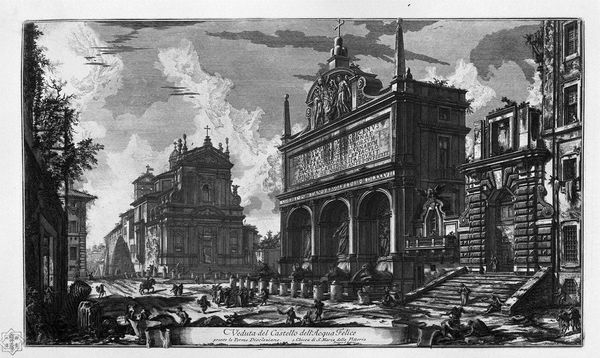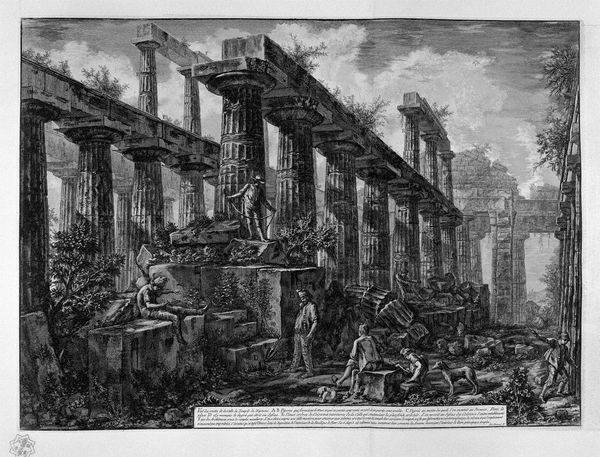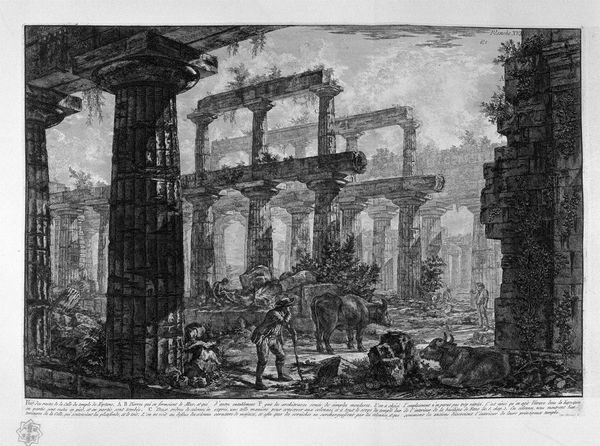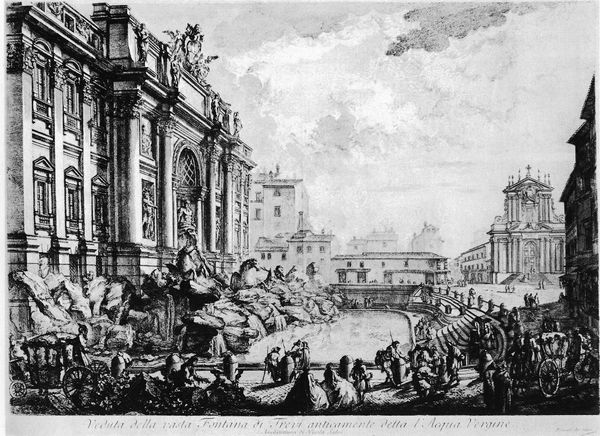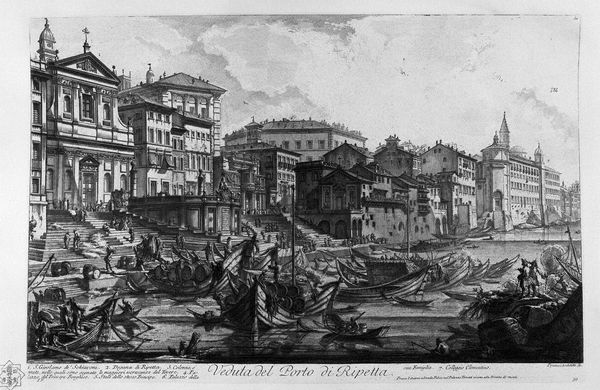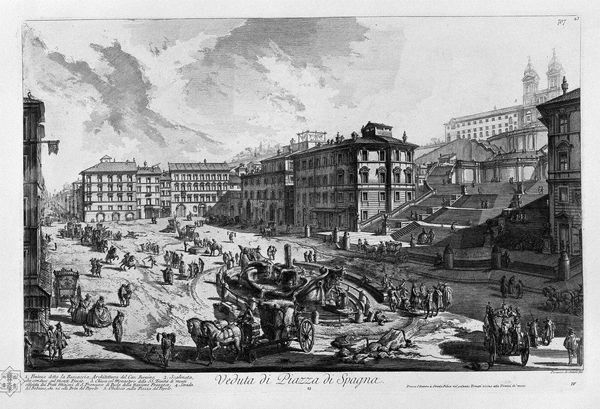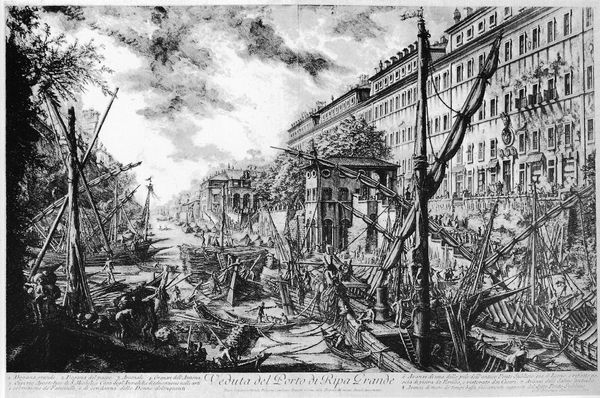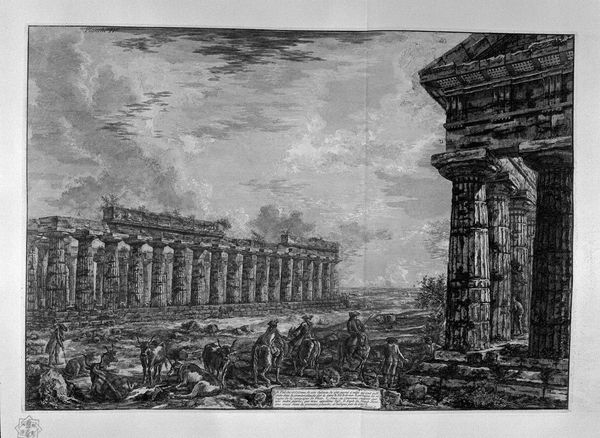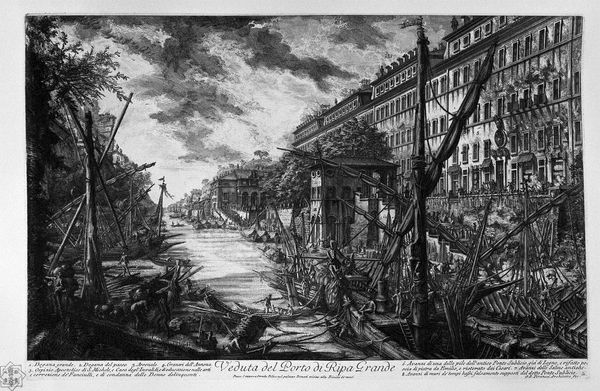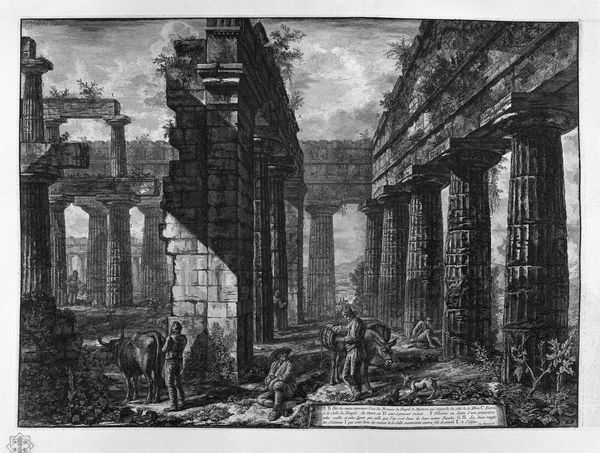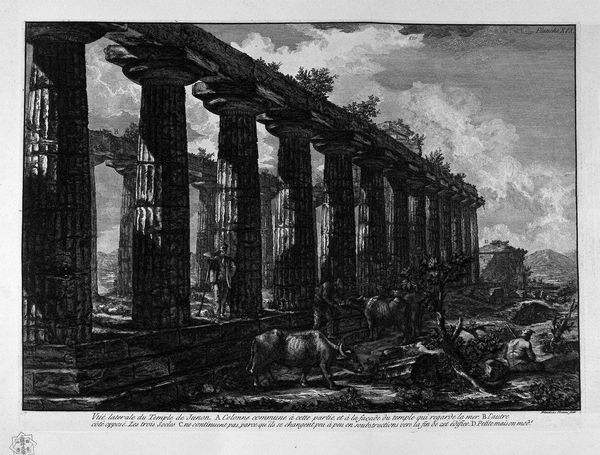
print, etching
#
baroque
# print
#
etching
#
landscape
#
cityscape
Copyright: Public domain
Editor: This etching, "Colonna Antonina," from 1751, by Giovanni Battista Piranesi, captures a bustling cityscape. What strikes me is how Piranesi uses light and shadow, especially around the fountain, creating a dramatic effect. What's your interpretation of this piece? Curator: Well, considering Piranesi's broader body of work and the socio-political climate of 18th-century Rome, I see more than just a cityscape. His etchings often served as critiques of power and social structures disguised as picturesque scenes. Note how the imposing architecture dwarfs the people. Editor: Yes, the architecture seems to dominate the scene! So, you're saying it’s a subtle commentary on the social hierarchy? Curator: Precisely. Piranesi, through his meticulous detail, presents the grandeur of Roman architecture, perhaps even satirizing the aristocratic families who commissioned such extravagant displays. This grandeur then throws into stark relief the common populace. The very act of producing and circulating these prints democratized these images, pushing back, in a small way, against the exclusivity of wealth. What message do you think he’s communicating to his contemporaries through this contrast? Editor: So, the etching wasn’t just documenting Rome, but questioning who it belonged to and who benefited from its magnificence? That's quite a different layer to consider. Curator: Exactly. By examining the historical and cultural context, we uncover layers of social critique embedded within what initially appears to be just a scenic view. We’re really seeing Piranesi’s position relative to the people in this bustling landscape. Editor: I’ll definitely remember that next time I see a landscape, thanks for highlighting the underlying message. Curator: My pleasure. Always question the narrative within the frame.
Comments
No comments
Be the first to comment and join the conversation on the ultimate creative platform.
